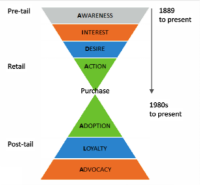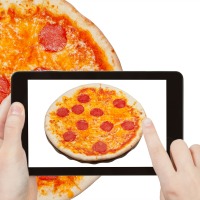 The luxury market is defined by superior service where the customer is made to feel vital. Translating that customer focus and passion to mobile can be a challenge, and luxury brands strive to to build stronger loyalty leading to customer brand advocacy. We’ve already identified the ways in which luxury brands are engaging customers on mobile so what can they do to keep those same customers loyal and get them to spread the word?
The luxury market is defined by superior service where the customer is made to feel vital. Translating that customer focus and passion to mobile can be a challenge, and luxury brands strive to to build stronger loyalty leading to customer brand advocacy. We’ve already identified the ways in which luxury brands are engaging customers on mobile so what can they do to keep those same customers loyal and get them to spread the word?
In an age where brand loyalty is shifting, luxury brands may have the advantage. Luxury product success is built on customer loyalty. Providing the best product and service ensures customers remain loyal. This fierce loyalty is also a benefit in today’s mobile environment where word of mouth advocacy sells more products.
 Mobile is changing the purchase funnel and literally flipping it on its head. Traditionally, the stages of the funnel consisted of awareness, interest, desire, and action to drive sales. With new technology has come a new way for marketers to drive purchases. The most-up-to-date model starts with the purchase and then the customer moves through adoption, loyalty, and advocacy, which puts the customer in the sales role.
Mobile is changing the purchase funnel and literally flipping it on its head. Traditionally, the stages of the funnel consisted of awareness, interest, desire, and action to drive sales. With new technology has come a new way for marketers to drive purchases. The most-up-to-date model starts with the purchase and then the customer moves through adoption, loyalty, and advocacy, which puts the customer in the sales role.
It is here in the loyalty stage that most luxury brands are already in. The challenge is how do they maintain that loyalty and build advocacy using mobile tools. For luxury brands there are several answers.
Personalization
Luxury brands are already providing personalized service. It’s what sets them apart from other products and services. But how this translates into a digital and mobile experience will be the tipping point in the luxury market. With lifelong customers, the last thing a luxury brand wants to do is to alienate so any mobile outreach must be clearly thought out and tested beforehand.
Digital Touch Points
Once personalization is established, then digital touch points are what will keep customers engaged. These touch points need to go from website to app to in-store to truly reach luxury consumers. This also allows brands to differentiate themselves so they maintain loyalty.
Omni-Experience
While omnichannel is still a popular buzzword, a better approach for luxury may be omni-experience. Omnichannel presents a similar, if not the exact same message across channels. Whereas an omni-experience is one in which mobile is connected to the in-store shopping experience. An example of this is the popular concept of showrooming or checking out products in-store before purchasing elsewhere online. Instead, luxury brands can incentivize customers who see something in-store by connecting it to a mobile strategy that provides free shipping, for instance. This decreases the chances that the customer will go elsewhere to purchase it and ultimately enhances the type of loyalty that leads to brand advocacy.
Although luxury brands have been slow to embrace mobile they have made some success in engagement building on already existing customer loyalty. In the future, they can become even more profitable if they nurture that loyalty and turn it into brand advocacy that translates into sales.
Need a strategy for sustaining loyalty and creating advocacy for your luxury brand? Contact us.
Image source: MLA






